
Post-Launch Operations at Sohae Satellite Launching Station (Updated)
This report was updated on June 1, 2023, to incorporate new information released by North Korea a few hours after the original publication.
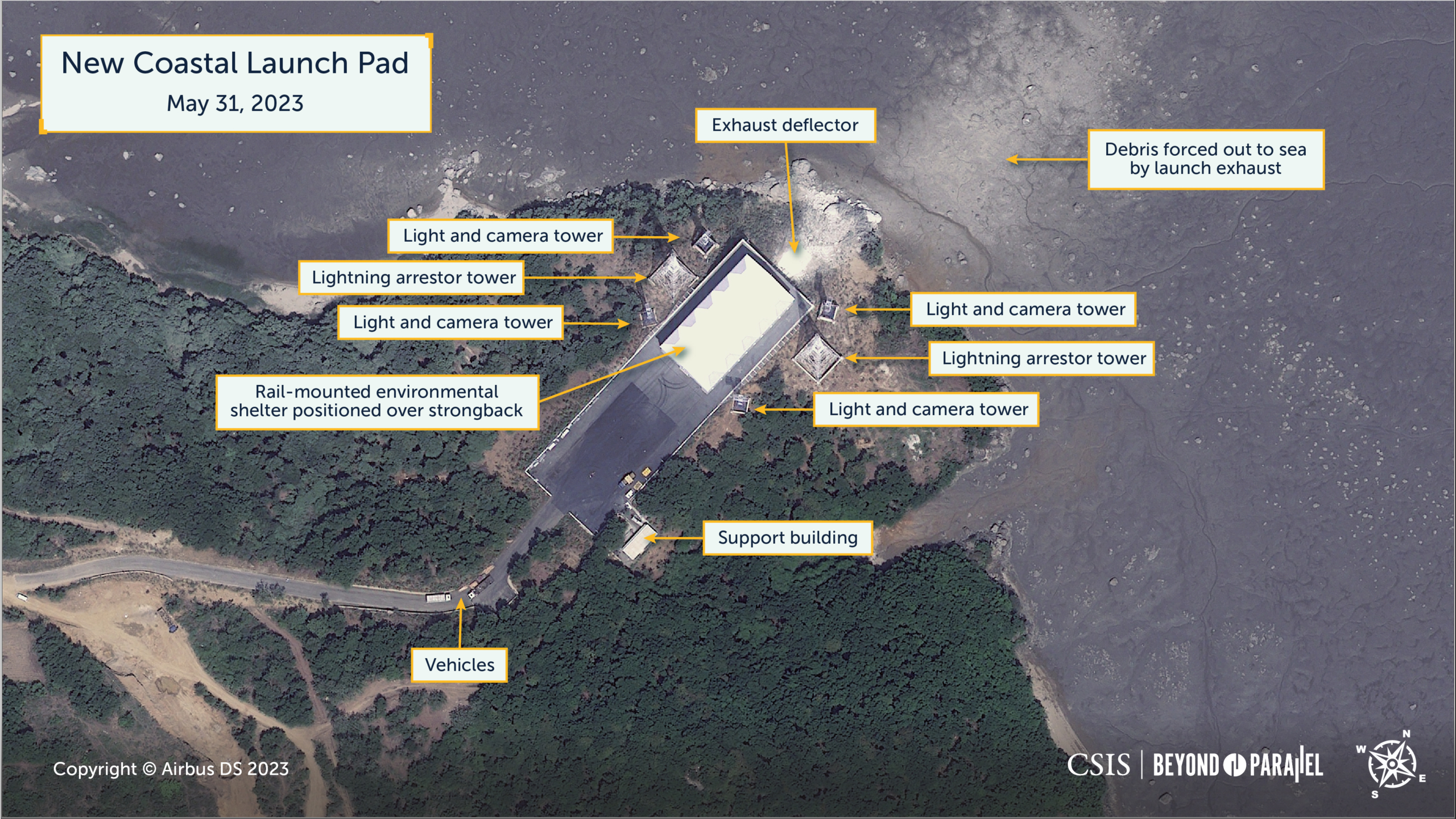
Key Findings
- North Korea launched its first-ever military reconnaissance satellite, the Malligyong-1, from the new coastal launch pad at the Sohae Satellite Launching Station on May 31, 2023. However, the carrier rocket reportedly experienced engine failure before falling into the Yellow Sea.
- At the new launch pad, the clearing of the launch pad of vehicles and construction materials and debris blown into the water are among the only indications of the recent launch.
- At the original launch pad, the environmental covers and work platforms at the umbilical tower stands have been closed, and the tower crane used to assist with work on the umbilical tower. The rail-mounted transfer structure remains at the umbilical tower. South Korean intelligence reportedly suggested North Korea may conduct a second launch at this launch pad in the coming days.
- The delivery vehicle for the Malligyong-1 launch, identified by North Korea as the “Chollima-1,” clearly demonstrates the use of ballistic missile technology, violating existing UNSC resolutions.
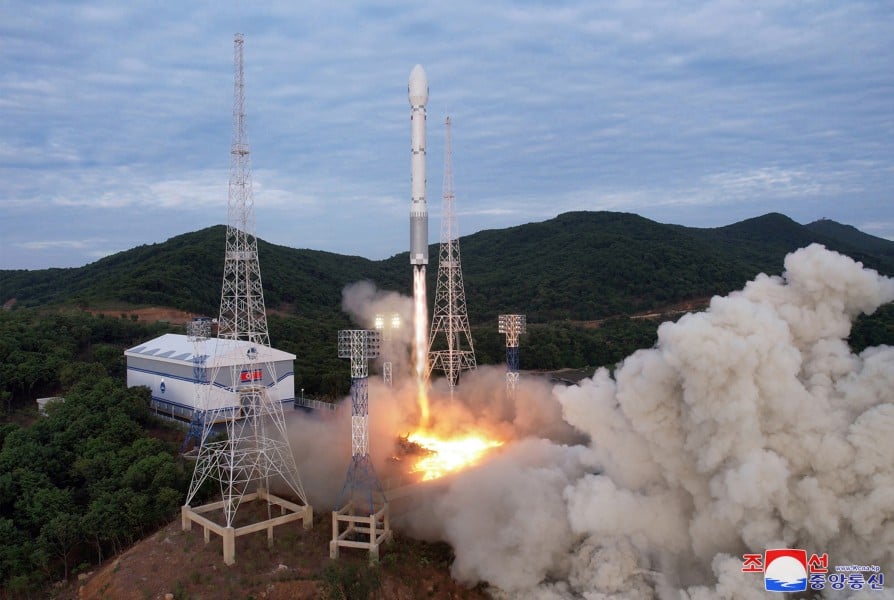
North Korea launched its first-ever military reconnaissance satellite, “Malligyong-1,” from the newly constructed coastal launch pad within the Sohae Satellite Launching Station at 6:27 am local time on May 31, 2023.1 According to North Korean state media, the satellite was mounted on “a new-type carrier rocket, ‘Chollima-1,’” but “fell to the West Sea of Korea after losing thrust due to the abnormal starting of the second-stage engine after the separation of the first stage during the normal flight.”2 The statement vowed to conduct a second launch as soon as possible.3 South Korea’s Joint Chiefs of Staff (JCS) retrieved parts of the launch vehicle in the Yellow Sea.
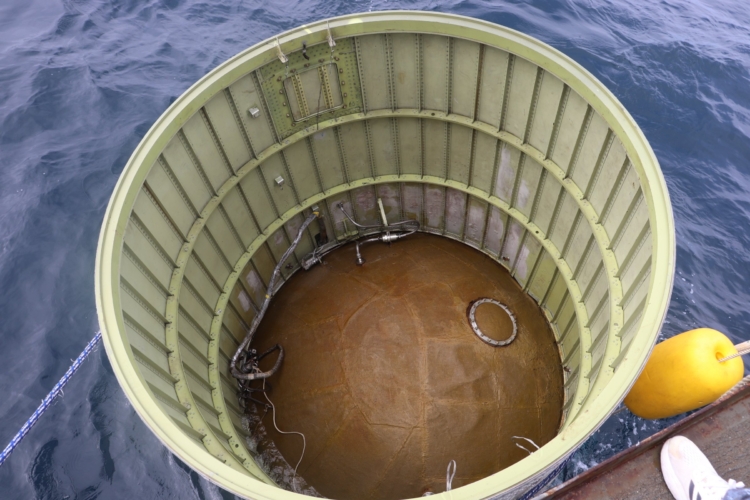

In a closed-door briefing for the parliamentary intelligence committee, South Korea’s National Intelligence Service (NIS) suggested a technical glitch from “excessive route change” may have caused the failure.4 NIS assesses it will take weeks for North Korea to fix the engine problems before conducting a second launch, but an early launch is still possible.5
High-resolution satellite imagery taken approximately five hours (11:35 am local time) after the launch had originally, and incorrectly, suggested the launch may have taken place at the original launch pad due to the considerable activity observed. However, subsequent media reports of the NIS’ closed-door briefing to the parliamentary indicated that the launch occurred at the new coastal launch pad.6 This was later confirmed by North Korea’s release of the photos of the launch.7
New Coastal Launch Pad
At the new coastal launch pad, where the launch of the Chollima-1 took place, the clearing of the launch pad of vehicles and construction materials and the presence of what appears to be debris blown into the water during the launch are among the only indications of the recent launch.

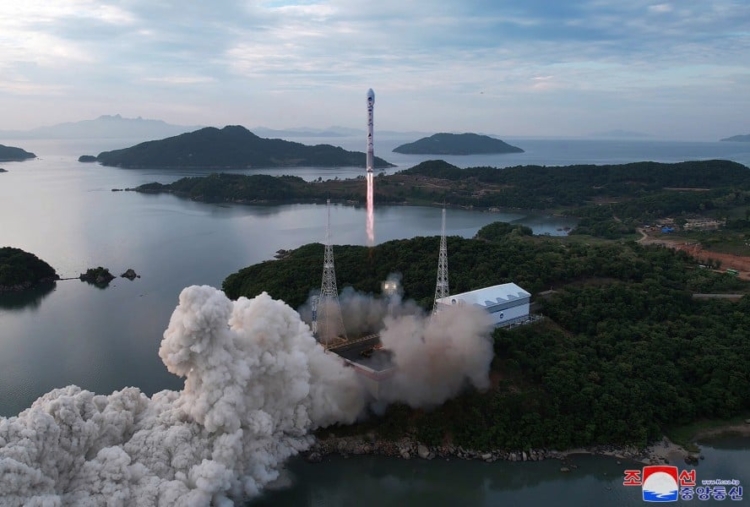
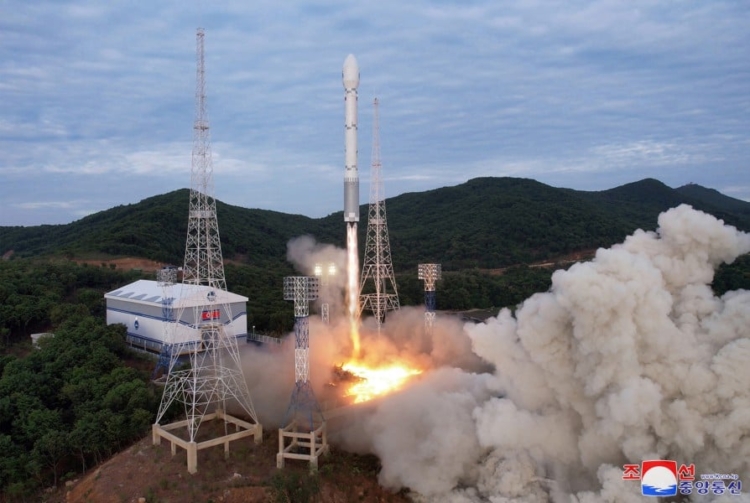
Original Launch Pad
At the original launch pad, the environmental covers and work platforms at the umbilical tower stands have been closed, and the tower crane used to assist with work on the umbilical tower. The rail-mounted transfer structure remains at the umbilical tower. Throughout the launch pad, two large telescoping cranes and 25 vehicles are observed, likely to support post-launch assessment and operations at the site. Four vehicles are present in the nearby launch support building to the east. The two largest of the towed trailers, measuring approximately 15 meters by 2.5 meters, are large enough to have assisted in the transport of sections of the tower crane or the Chollima-1 SLV.
In a closed-door briefing to the parliament, the NIS suggested that North Korea could conduct a second launch attempt here to ensure success, stating that “there is a possibility the second launch will be carried out at the original launch pad with secured reliability.”8
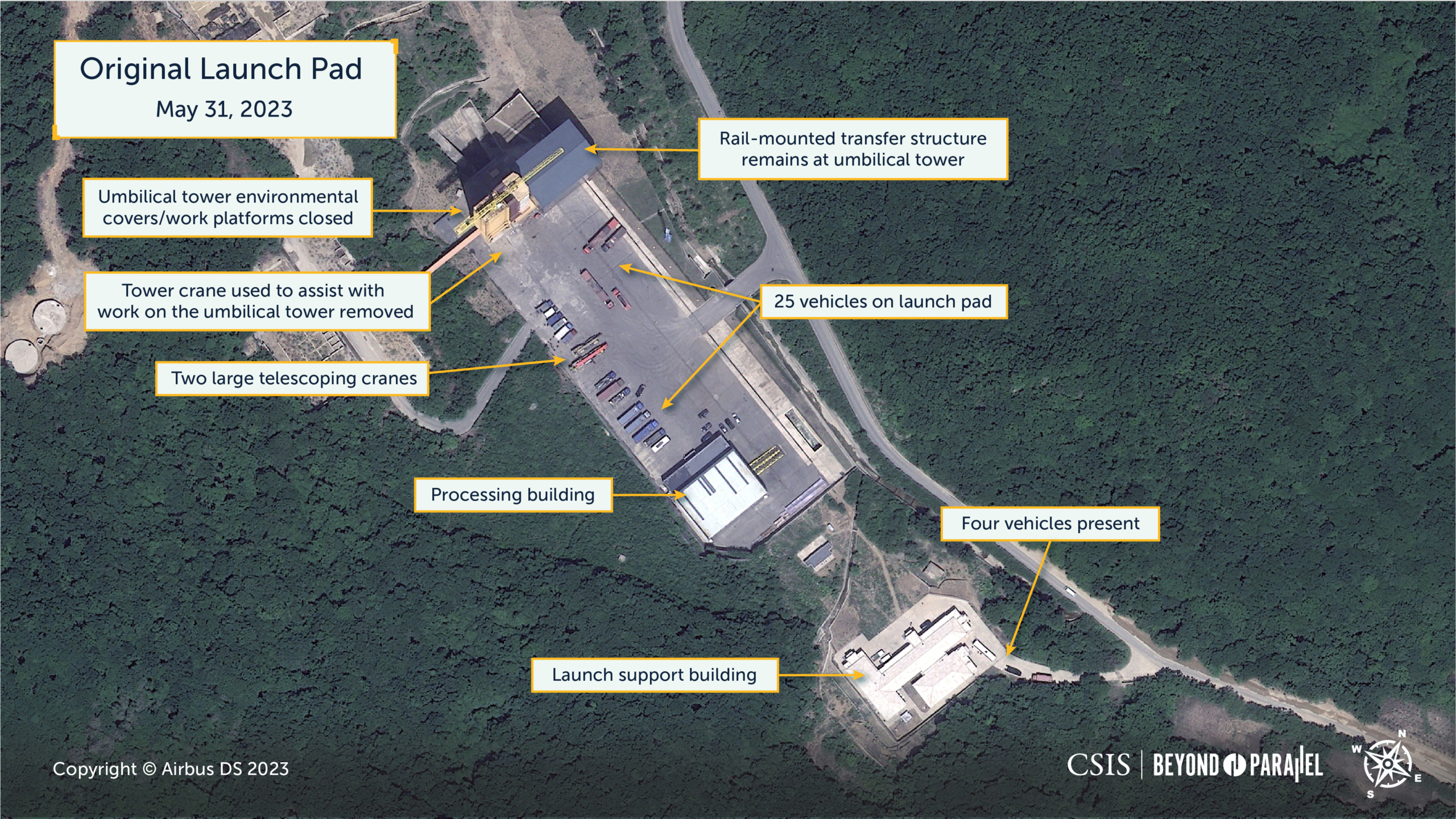
Horizontal Processing Building
Three probable gondolas and one 24-meter boxcar are observed by the rail near the horizontal processing building. The large boxcar is capable of having transported sections of the tower crane at the launch pad or components of the Chollima-1 SLV. Within the perimeters of the processing building, stacks of supplies and shipping crates continue to change in size and shape.
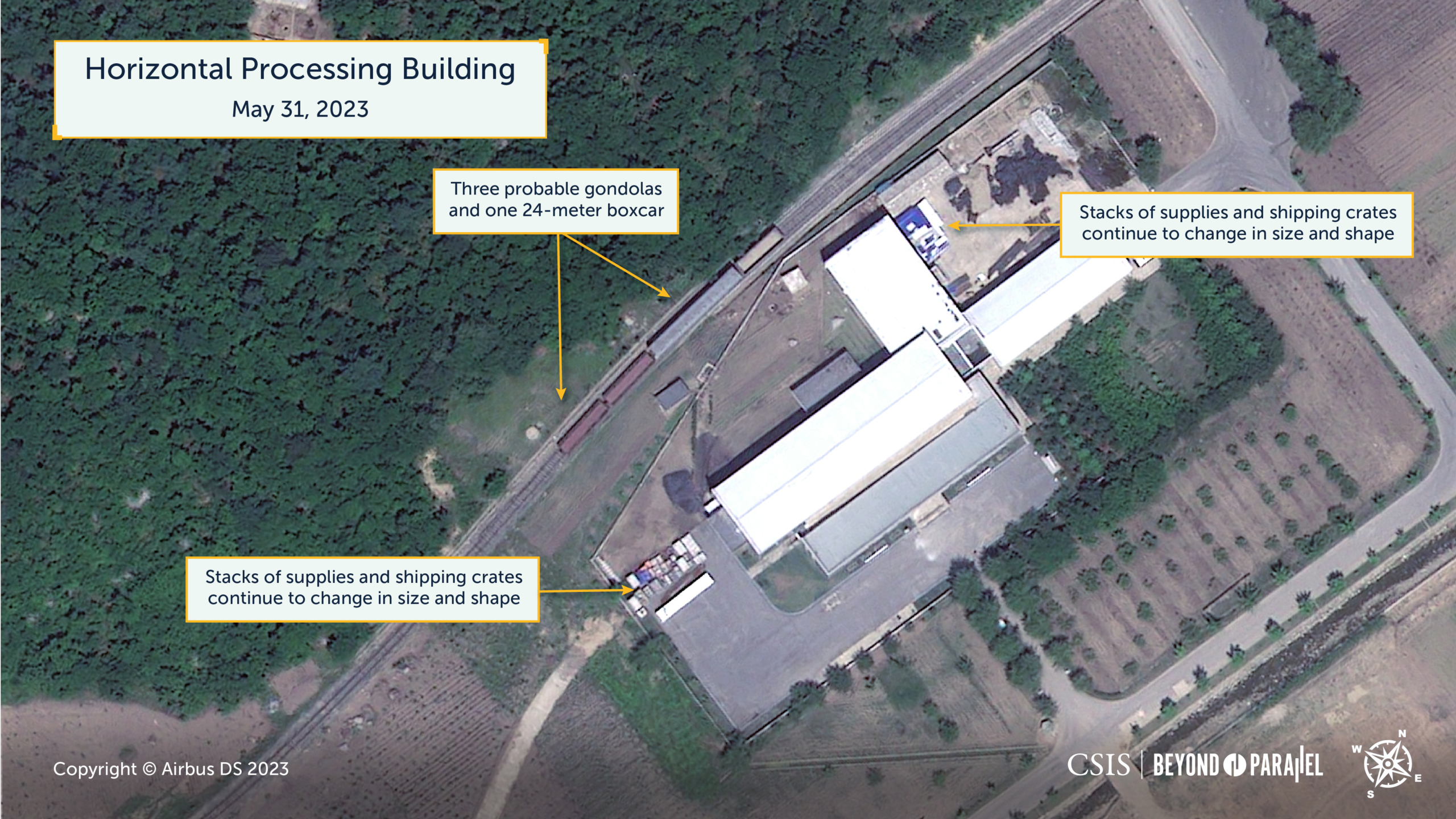
VIP Observation Areas
During the closed-door briefing to the parliament, NIS reportedly assessed Kim Jong-un to have observed the launch in person from a nearby observation deck located 1.3 km away from the launch site.9 This site is likely the new VIP observation area created with an unobstructed view of the coastal launch pad. In the May 31, 2023, image, unidentified objects are observed in the area.
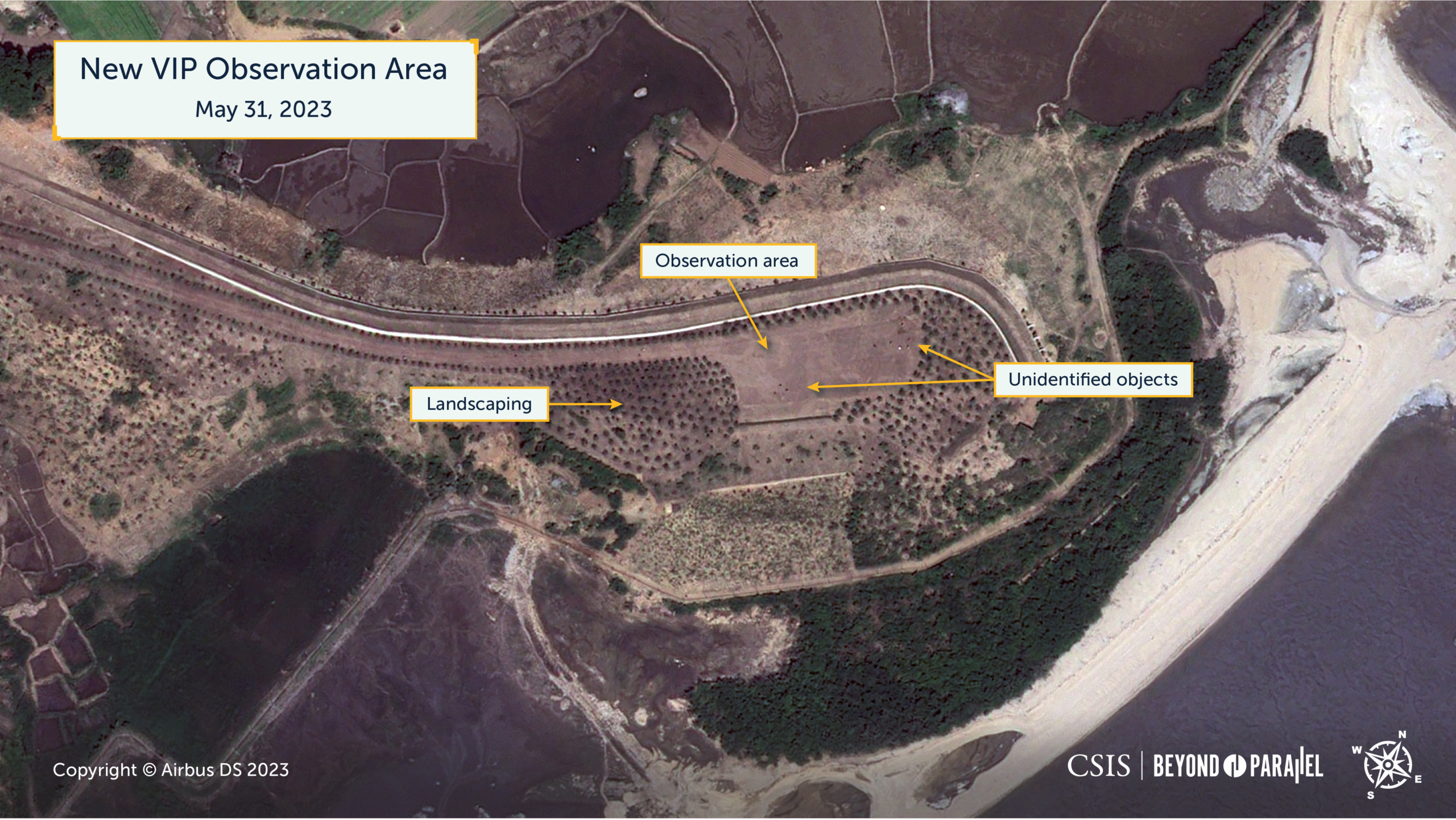
In another VIP observation area, telemetry, camera, and support vehicles were observed. These vehicles arrived at the pavilions on May 30, 2023.
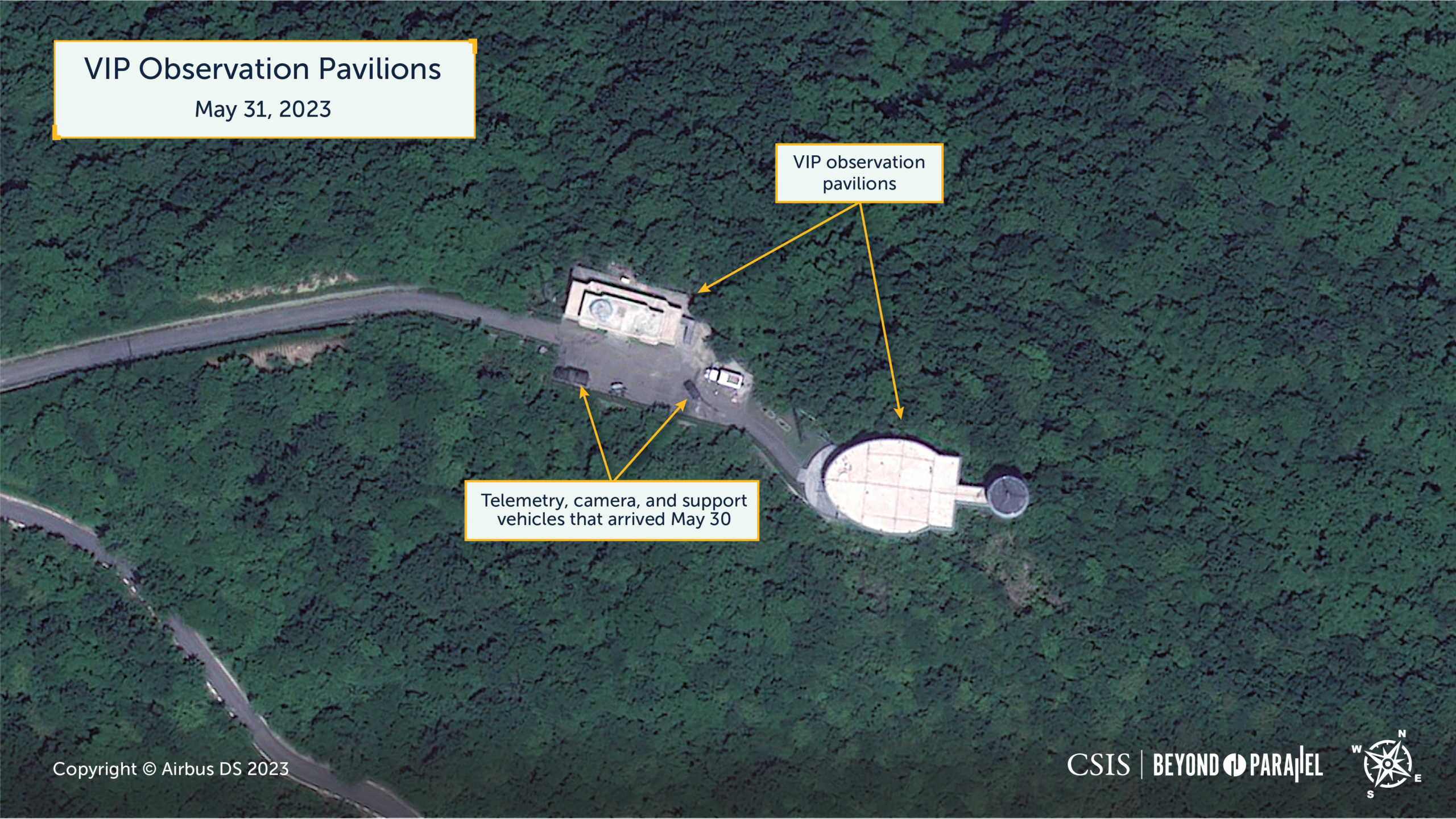
References
- “KCNA Report,” KCNA, May 31, 2023. “Malligyong” roughly translates to “a telescope that can see 10,000-li.” Li is a traditional unit of distance which equates approximately 500 meters. ↩
- Ibid. ↩
- Ibid. ↩
- “N.K.’s space vehicle possibly had technical glitch from ‘excessive route change’: S. Korean spy agency,” Yonhap, May 31, 2023. ↩
- Ibid. ↩
- 이상현 (Lee Sang-hyun), “북, 곧바로 정찰위성 ‘2차 발사’ 예고…며칠 내 단행 가능성도 (North Korea immediately announced ‘second launch’ of reconnaissance satellite…Possibility of carrying out within a few days),” Yonhap, May 31, 2023. ↩
- “Kim Yo Jong, Vice Department Director of C.C., WPK Releases Press Statement,” KCNA, June 1, 2023. ↩
- 이상현 (Lee Sang-hyun), “북, 곧바로 정찰위성 ‘2차 발사’ 예고…며칠 내 단행 가능성도 (North Korea immediately announced ‘second launch’ of reconnaissance satellite…Possibility of carrying out within a few days),” Yonhap, May 31, 2023. ↩
- Ibid. ↩
